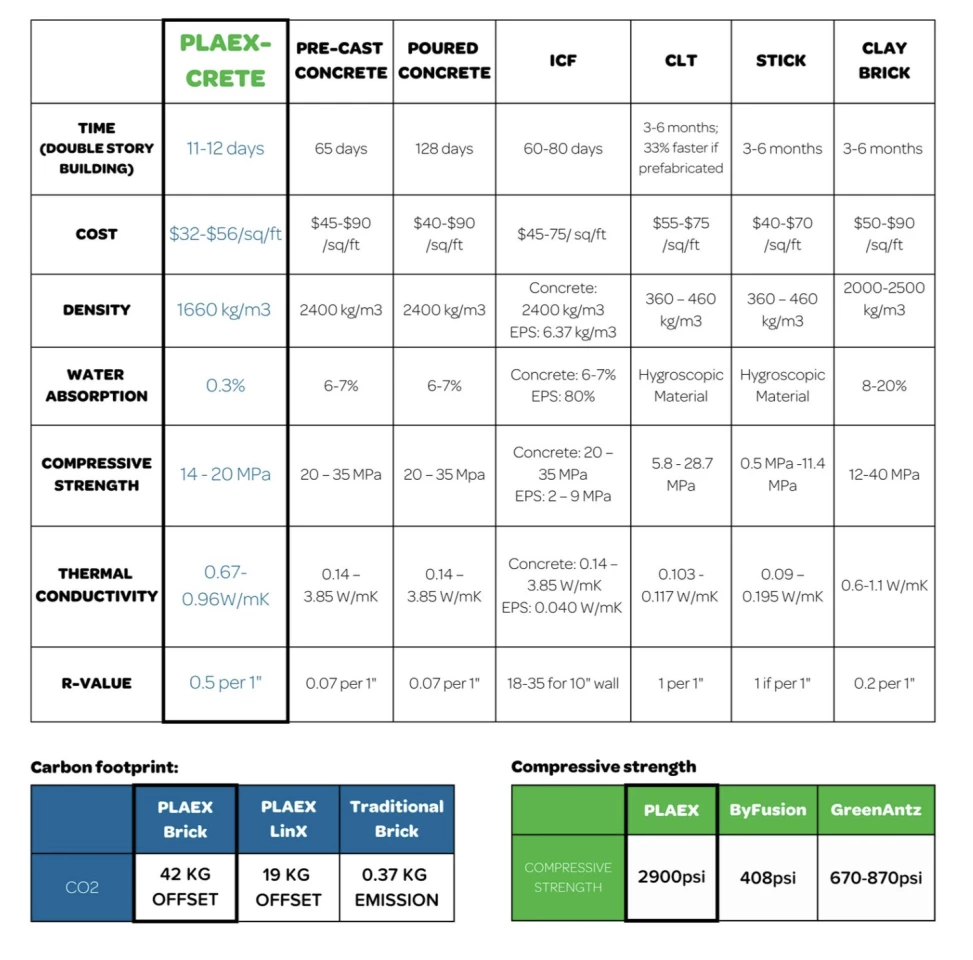If you ever played with interlocking brick toys as a kid, or even as an adult, you're instantly qualified to build a house with Plaex blocks, according to the team behind a strong, recycled construction material that appears to have a lot of people rather excited.
The brick in question is one made out of "Plaex-crete," a strong composite made up of more than 90% recycled plastic, which is shredded and cleaned and put through an extruder to produce a cement-style paste. The finished product is essentially this paste, plus some extra stuff for the remaining 10% (colorants plus UV and flame inhibitors). The final block is 35% lighter than a traditional brick its size.
But, back to the easy no-fuss building method, as the bricks click into place without cuts or mortar. The company says a double-story build would take 11-12 days with minimal equipment, which means it's either aimed for ambitious yet novice DIYers, or a whole different market completely – such as our future humanoid robot bricklayers.
"We believe that automation is about to transform our world, in a shift bigger than the Automobile and the smart phone combined," the team writes. "The Future of automation is here today. From 3D printing to robotic placing arms to humanoid robots. There are many companies now beginning deliveries of humanoid robots to warehouses and factory floors near you. Automation and cooperative robots are no longer science fiction.
"We Look forward to one day soon having fleets of robots assembling and modifying truly circular and affordable buildings," they add.
Plaex creator Dustin Bowers is a carpenter by trade, but had a reckoning in 2017 when he became a father and took stock of how wasteful the construction industry is. That year he had another lightbulb moment while reading a research paper on the use of plastic as an aggregate in concrete. (PL-astic, A-ggregate and EX-truder then provided the startup's name.)
Plastics including PETE, LDPE, PP and HDPE (but not PVC or PS) types are sourced from "extended producer responsibility" (EPR) partners, most often in the form of farm and agriculture waste. The waste is then processed and pressed into LinX blocks for landscape walls and circular angling, and Brick&Panel blocks for wall builds.
According to their form guide, they measure up against a range of materials.

They're apparently hard to break, too (however, you wouldn't really need a 'demo-day' to take down a wall, since the bricks can be disassembled much like a Lego tower).
They measure up well in a tractor-ramming test, too...
While the blocks are available to order now, the company is working towards permits for use in houses; at the moment, they're only approved for use in storage, walls and landscaping. The team recently collaborated with JOT Design to show how the products could be used in home design, as they head towards full certification.
Source: Plaex







